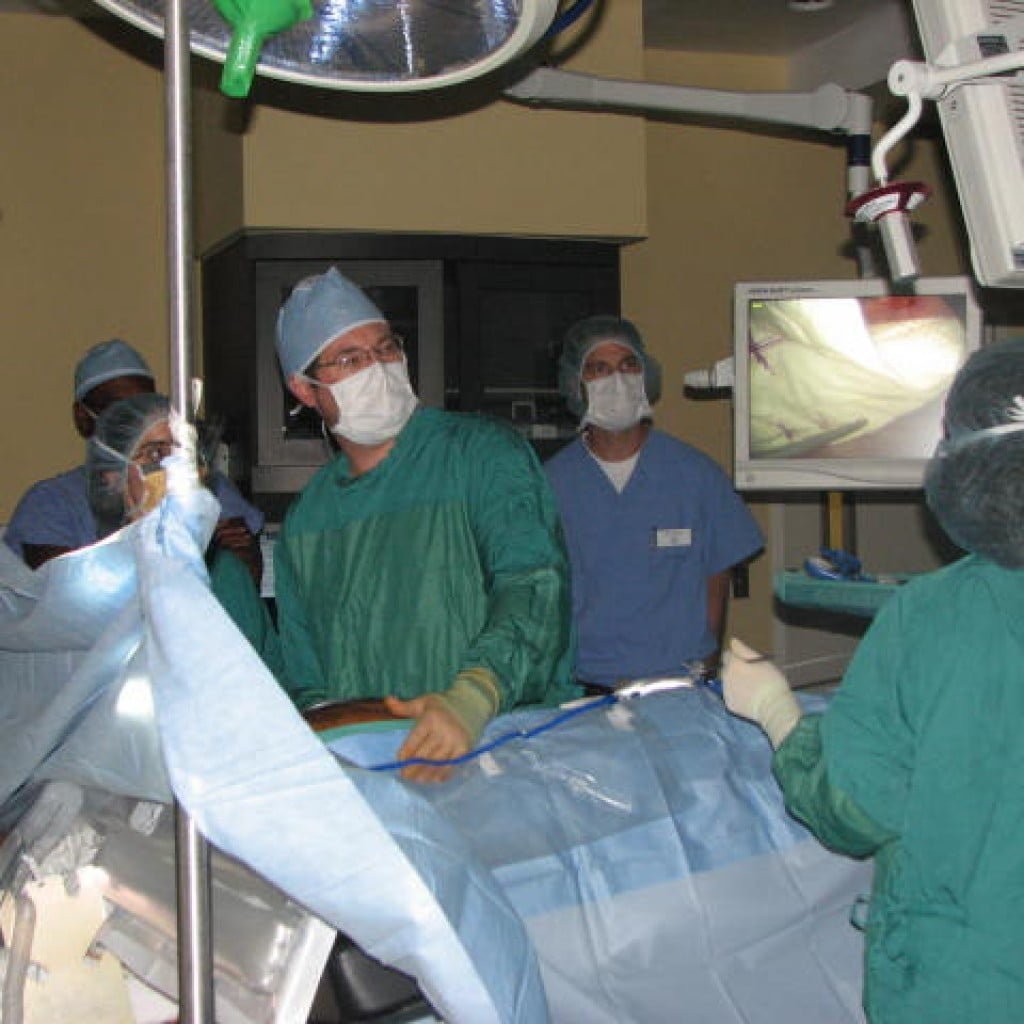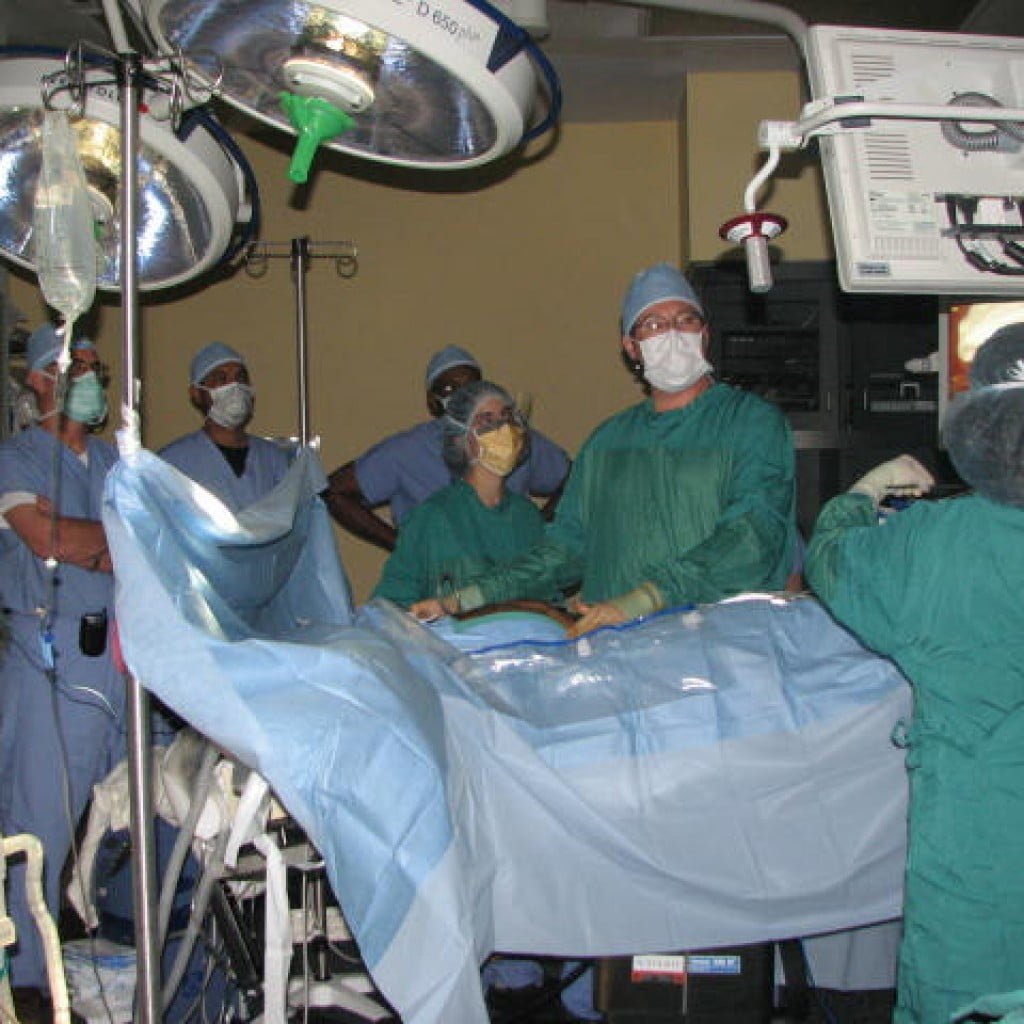Laparoscopic surgery, has also been called minimally invasive surgery (MIS), bandaid surgery, or keyhole surgery and even Laser surgery. In its simplest terms it is just a new way to do classic operations with less injury to the body. Operations are performed through small incisions (usually 0.5–1.5 cm) with specialized instrumentation by a surgeon who in many cases is recreating a “old” procedure that would typically require large incisions. Smaller incisions often mean less pain and lowered risks of infection for the patient.
There are a number of advantages to the patient having a laparoscopic procedure versus the open procedure for the same disease. Pain and hemorrhaging are may reduced due to smaller incisions and recovery times are typically shorter if all goes well. . The key element in laparoscopic surgery is the use of a laparoscope attached to a fiber optic cable system which allows viewing of the affected area of the body on a large video monitor by the surgeon. In some cases the image can be in 3D.
The fiber optic cable system is typically connected to a ‘cold’ light source (halogen or xenon), to illuminate the operative field, which is inserted through a 5 mm or 10 mm cannula or trocar. The abdomen is usually insufflated with carbon dioxidegas. This elevates the abdominal wall above the internal organs to create a working and viewing space. Carbon dioxide (CO2) is used because it is common to the human body and can be absorbed by tissue and removed by the respiratory system. It is also non-flammable, which is important because electrosurgical devices are commonly used in laparoscopic procedures.
Laparoscopic surgery includes operations within the abdominal or pelvic cavities, whereas similar surgery performed on the thoracic or chest cavity is called thoracoscopic surgery. Orthopedic surgeons using very similar equipment perform arthroscopic surgery on the joints. Although the procedures in each specialty are different they have a similar goal- providing an equivalent or better procedure with less trauma and pain.
History
It is difficult to credit one individual with the pioneering of the laparoscopic approach. In 1902, Georg Kelling, of Dresden, Germany, performed the first laparoscopic procedure in dogs and in 1910, Hans Christian Jacobaeus, of Sweden, reported the first laparoscopic operation in humans.
Dr. Gillian teaching a Laparoscopic Surgical Course for visiting surgeons


